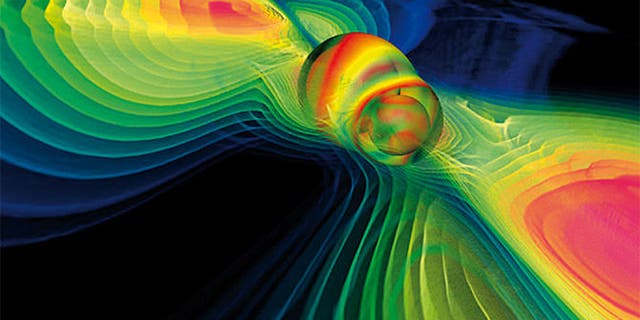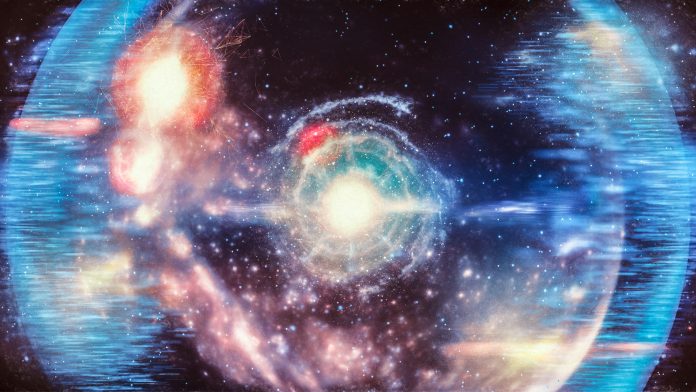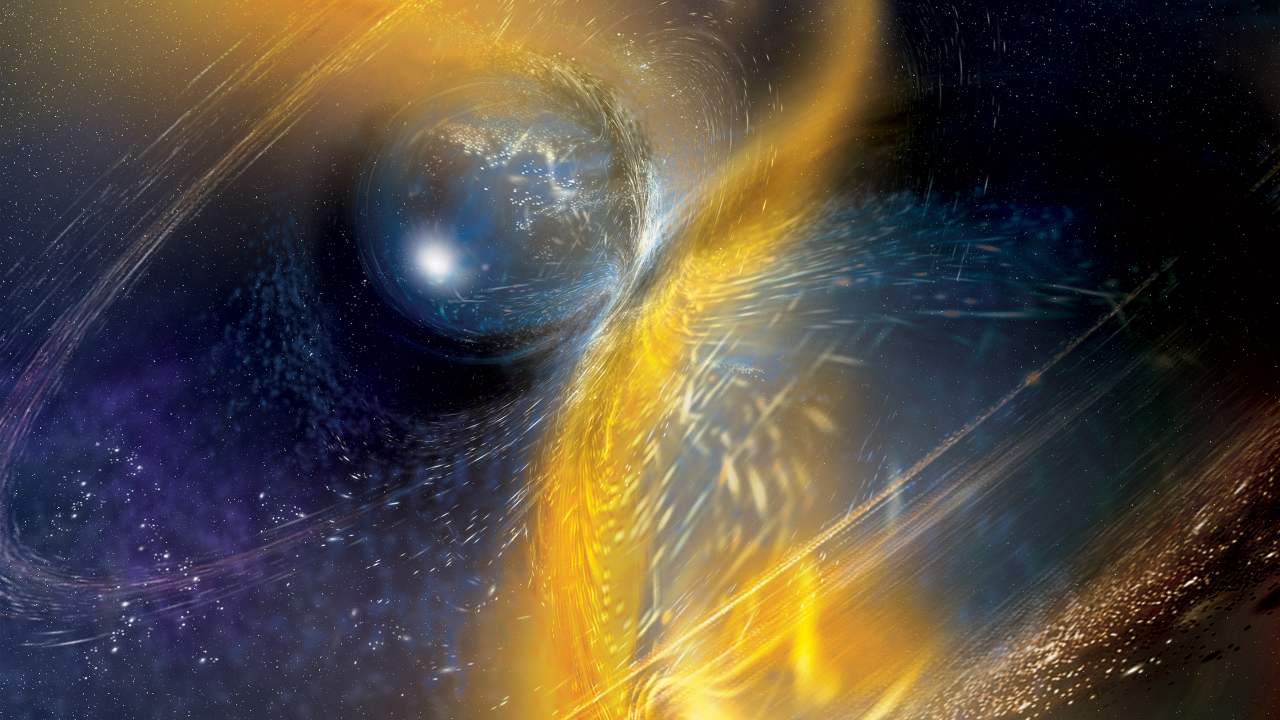Scientists discovered a split-second burst of gravitational waves, space-time distortions… However, researchers are unsure where this explosion originated.
The gravitational wave signal, detected by the Laser Interferometer Gravitational-Wave Observatory (LIGO) and the Virgo interferometer, lasted barely 14 milliseconds, and scientists have yet to determine the source of the burst or whether it was simply a blip in the detectors.

The collision of two large objects, such as two black holes or two neutron stars, can produce gravitational waves. According to findings presented at the American Astronomical Society conference, astronomers discovered such gravitational waves from a neutron star collision in 2017 and one in April 2019.
According to Andy Howell, a staff scientist at Los Cumbres Observatory Global Telescope Network and an adjunct faculty member in physics at the University of California, Santa Barbara, gravitational waves from collisions of such massive objects typically last longer and manifest in the data as a series of waves that change in frequency over time as the two orbiting objects move closer to each other. He was not part of the LIGO research.
According to Howell, the new signal was a burst instead of a series of waves. One more likely explanation is that this short burst of gravitational waves is caused by a more temporary event, such as a supernova explosion, which is the catastrophic end of a star’s existence.

Indeed, some astronomers believe this might be a signal from the Betelgeuse star, which has recently dimmed and is likely to undergo a supernova explosion. But the Betelgeuse star is still there so it’s not that scenario, Howell said. He also believes it is unlikely to be another supernova because they occur only approximately once every 100 years in our galaxy.
What’s more, the burst still “seems a little too short for what we expect from the collapse of a massive star,” he said. “On the other hand, we’ve never seen a star blowing up in gravitational waves before, so we don’t really know what it would look like.” Furthermore, the astronomers found no neutrinos, which are small subatomic particles with no charge that supernovas are known to produce.
Another option, according to Howell, is that the signal was created by the merging of two intermediate-mass black holes. Merging neutron stars produce waves that persist longer (around 30 seconds) than this new signal, whereas merging black holes may resemble bursts more closely (that last around a couple of seconds). However, intermediate black hole mergers might also release a series of waves that change in frequency.
LIGO detected this signal while looking for similar bursts. But “that doesn’t mean that what it found is an intermediate-mass black hole merger,” Howell told Live Science. “We don’t know what they found,” especially since LIGO hasn’t yet released the exact structure of the signal, he added.

It’s also possible that this signal was just noise in the data from the detector, Howell said. This burst of gravitational waves, on the other hand, was detected by all three LIGO detectors: one in Washington state, one in Louisiana, and one in Italy. So the probability of the LIGO detectors finding this signal by chance (meaning it’s a false alarm) is once every 25.84 years, which “gives us some indication that this is a pretty good signal,” Howell said.
Other explanations for this unexplained surge could also exist. A supernova, for example, may have collapsed directly into a black hole without producing neutrinos, though such an occurrence is very speculative, according to Howell. Astronomers are now pointing their telescopes in that direction in an attempt to find the source of the waves.
“The universe always surprises us,” he added. “There could be totally new astronomical events out there that produce gravitational waves that we haven’t really thought about.”





